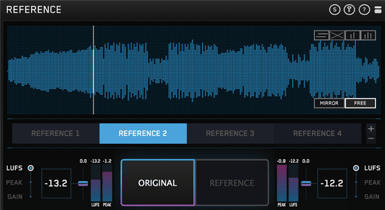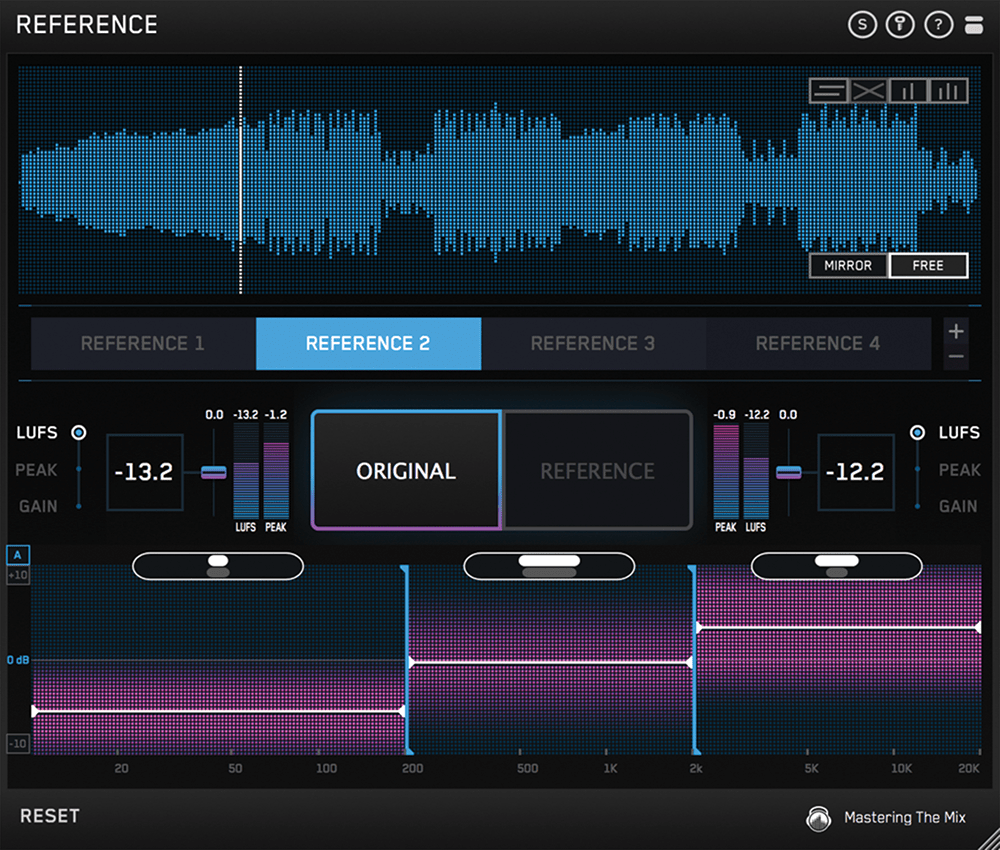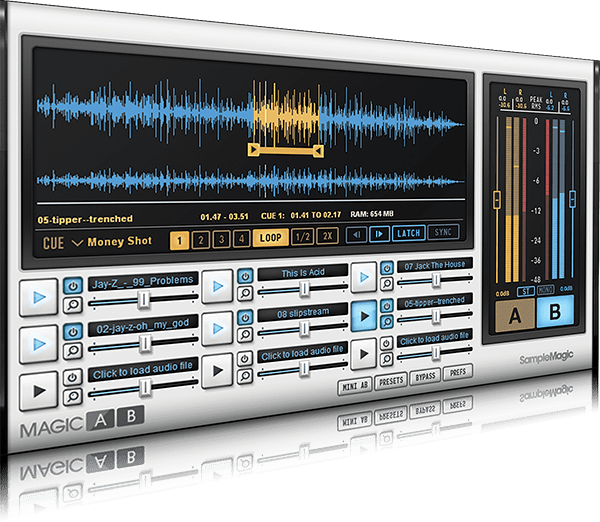Mastering The Mix Reference Review – Insight Into Your Mix
Mastering The Mix’s new plug-in offers innovative tools to help you compare your mix to your references, but how useful are they? Alex Holmes finds out… Price £49 Contact Mastering The Mix Reference key features Track metering and referencing plug-in Load up to 20 tracks, sync to DAW or Free mode Auto align and volume […]

Mastering The Mix’s new plug-in offers innovative tools to help you compare your mix to your references, but how useful are they? Alex Holmes finds out…


Price £49
Contact Mastering The Mix
![]()
Reference key features
- Track metering and referencing plug-in
- Load up to 20 tracks, sync to DAW or Free mode
- Auto align and volume match
- LUFS and Peak meters
- Trinity display with up to 5 bands and band solo
- Compare volume, width and compression of each band
Trusting your ears is key, but using references can be a great way to hone in on where your track might be lacking. There are times, however, when you reference a track and feel your mix is close, but isn’t sounding as good or as loud.
Reference from Mastering The Mix follows on from previous metering plug-in, Levels, offering a comprehensive A/B toolkit and some unique features for a better insight into the differences between tracks.
The top half of the plug-in has similarities to Sample Magic’s Magic AB, which is our current method of referencing multiple tracks. You can load up to 20 references, and a waveform view allows you to easily highlight and jump between multiple loops when using Free mode. However, the lack of a zoomable waveform can make it tricky to set accurate looping points.
There’s also a Mirror mode to sync the playback with the timeline of your DAW, which is especially useful when you want to compare different versions of the same track, and as a great timesaver, there are four buttons used to automatically align or volume-match either just the current or all the reference tracks to your mix.
We also have two large buttons to switch between the original and the reference (which can also be done with a shortcut key), meters with peak and LUFS values, and a gain-adjustment slider.
Holy Trinity
Where Reference really differentiates itself is in the third section, with the Trinity display. Here, you can select and solo up to five bands, so you can hone in on comparing a particular section of the spectrum. A white line across each band moves up or down, to indicate whether your reference material is either louder or quieter in this region, giving you instant feedback on whether you need to add or reduce the bass, mids or tops in your track.
Similarly, meters above show how much stereo width there is in each frequency range, giving you extra information to consider when adjusting your pans and stereo processing. Finally, there’s a unique display that shows dots moving either towards or away from the white line to indicate the short-term dynamic range and whether your reference track is more compressed or less compressed in this region.
If the brightness is low, this indicates that you have a similar amount of punch and compression. In practice, we found the meters easy to get used to and read, and the well-written PDF manuals give tips on how to reference both for mixes and when checking masters to originals.
The only essential feature currently missing is a mono button, which is useful for checking mono compatibility and also how the spectrum sounds without the distraction of stereo.
The ref’s decision is final
Having extra insight into what makes one track sound different to another is a useful and powerful tool. Our current monitoring and reference chain inside Logic consists of four separate plug-ins including a spectrum analyser, loudness meter, EQ (used to solo specific bands) and a referencing plug-in. We’re happy to say that Reference will be replacing all of these, with the exception of the Spectrum Analyser, which is still useful for checking specific frequencies.
Alternatives

Sample Magic
Magic AB £49
This has 9 track slots and a clear, zoomable waveform view. There’s also MeldaProduction’s MCompare (€59) that has M/S monitoring, a Blind Test mode and can compare different stages of your mastering chain. However, both of these lack some of Reference’s metering features.
